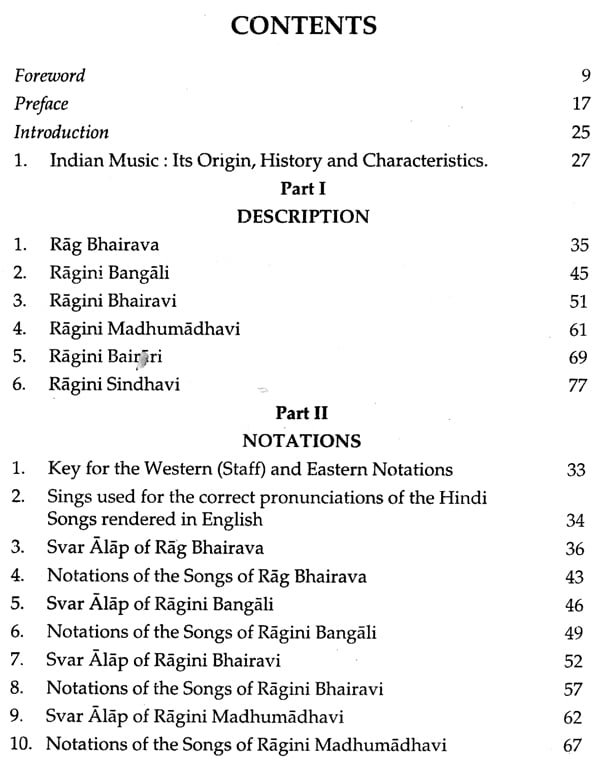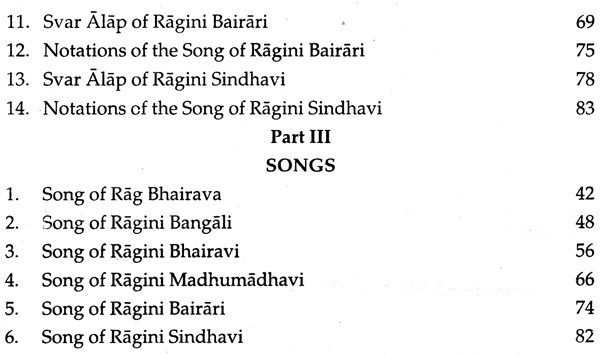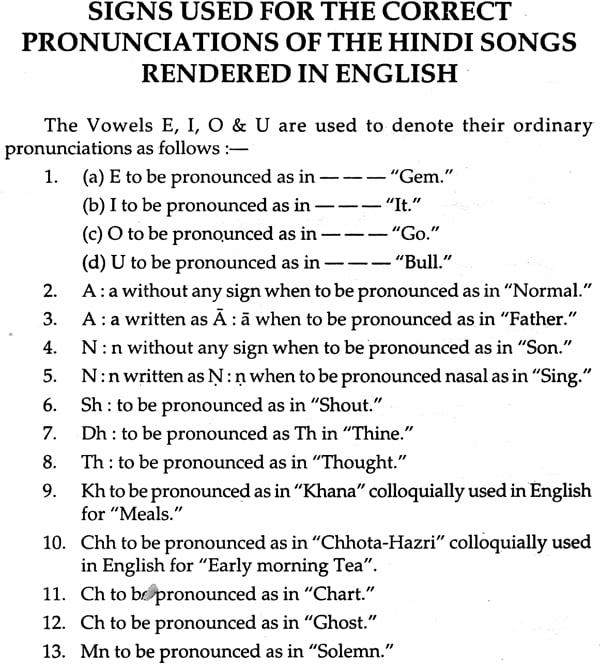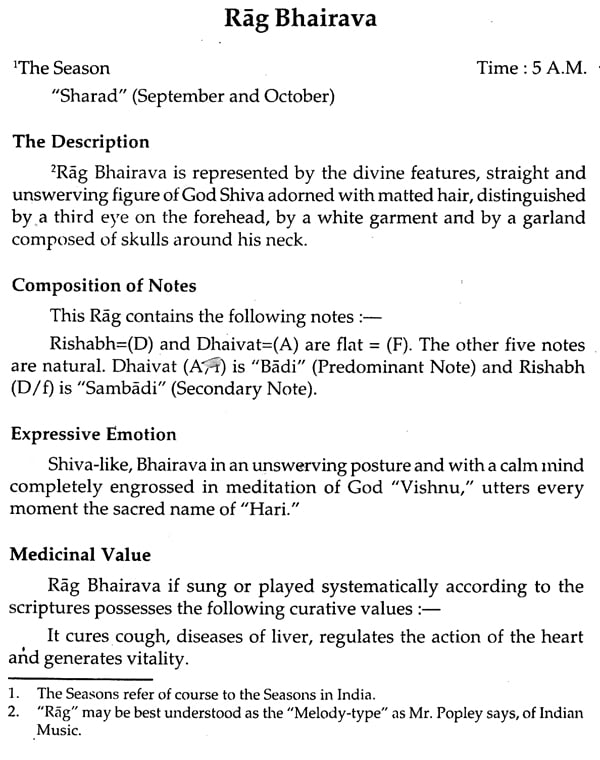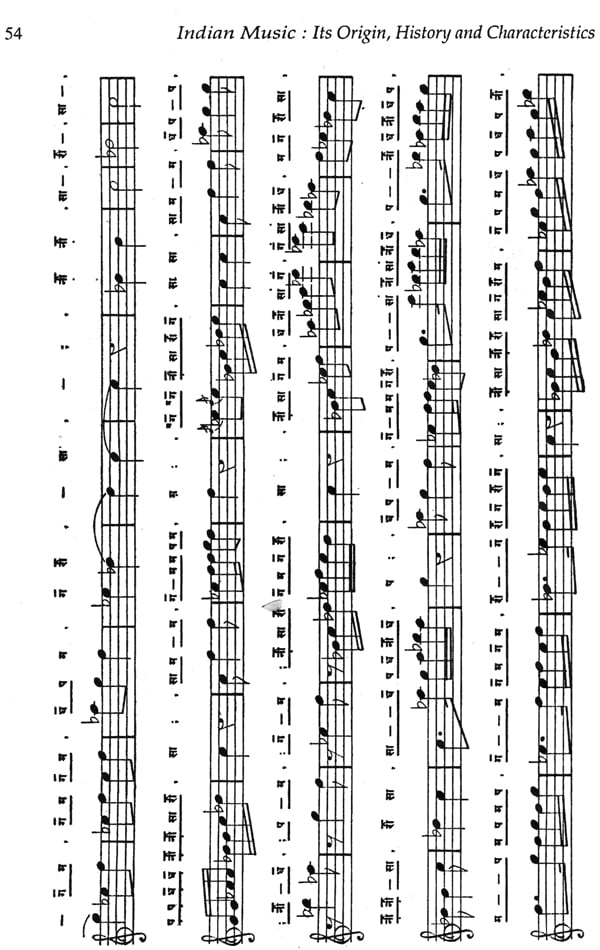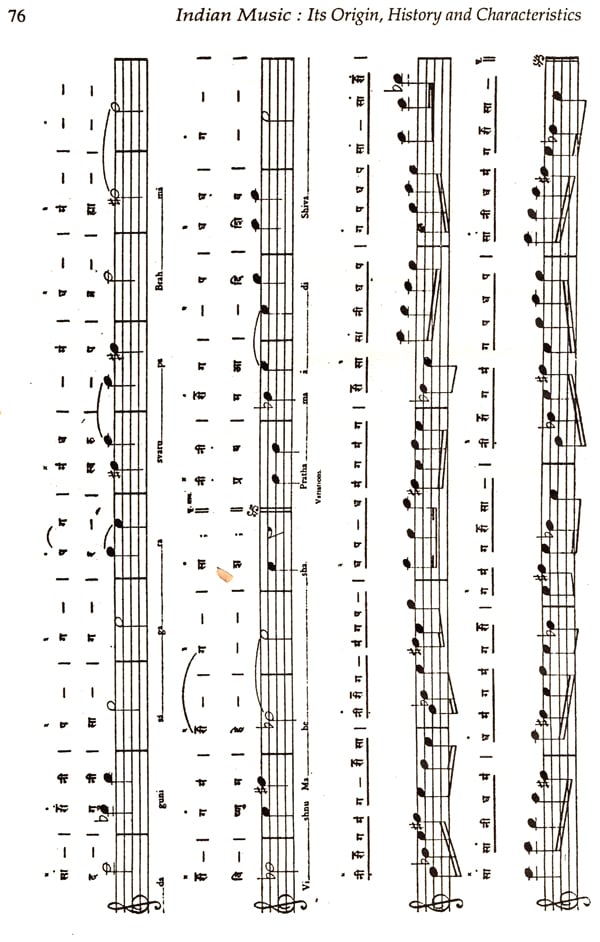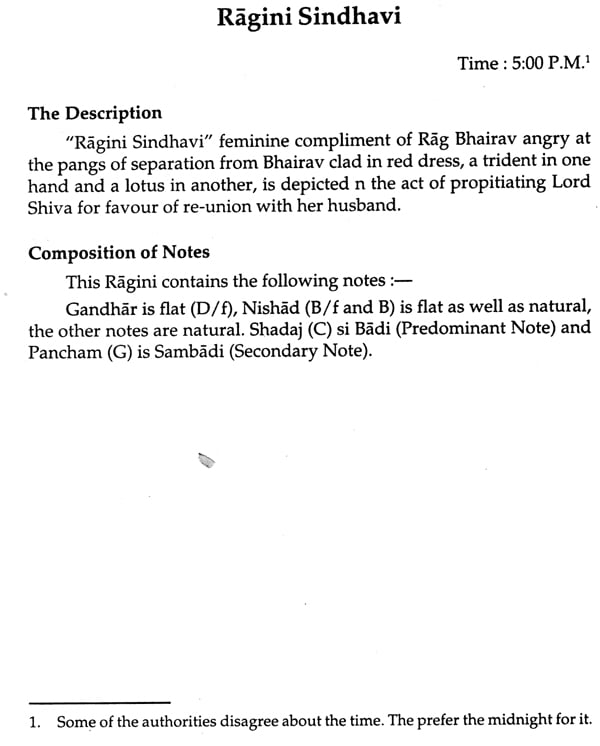
Indian Music: Its Origin, History and Characteristics
Book Specification
| Item Code: | NAU581 |
| Author: | M. Vijay Laxmi |
| Publisher: | Sanjay Prakashan |
| Language: | English |
| Edition: | 2010 |
| ISBN: | 9788174531551 |
| Pages: | 84 |
| Cover: | HARDCOVER |
| Other Details | 10.00 X 7.50 inch |
| Weight | 350 gm |
Book Description
Indian Music—Its Origin, History and Characteristics is a rare work of pre-independence days. The purpose of the book, according to the scholar, is to introduce and educate the students of Music to Indian Music. The author says—"It is a supplement to the existing Indian Literature on the subject (music) and not a substitute," As such the book is not a comprehensive work on music, it does provide an introduction to the subject by defining the essential basic terms of music in simple and easy language. The short definition offered by the author will be much useful for the non-Indian Music students and music lovers of India as well. The terms Margi Deshi, sound, shruti, svara, grama, murchana, tana kuta tanas, gamaka, alankara etc are some of them which are described. The ancient terms like graha, amsha and nyasa are also included in the list of term definition. The author has mentioned the names of various ancient authors viz., Sharngadeva, Damodara Pandit, Ahobala and the latest scholar of his time V.N. Bhatkhande. Yet he has followed the Hanuman-mata or school of music in his work which according to him is popularly known and current at that time. He has adopted the raga ragini classification of Hanuman-mata. hi this first volume, after defining melody types in general with the four types of notes vadi, samvadi, vivadi and anuvadi he has taken the first raga-Bhairava with its five Tema' raginis. This first volume was supposed to be followed by five more volumes, comprising five raga and their raginis.
Re-awakened interest in the artistic and cultural heritage of this country is now a phenomenon none could dispute and few could overlook. The fervour for the re-discovered wealth of India is obvious both in the increasing number of volumes on ancient Indian literature, art, philosophy and culture and in the presistent intensity with which they have been welcomed and discussed. The fervent interest has, however, not yet reached the phase when the traditional cultural assets of the country have been, more or less, objectively examined for their intrinsic worth.
The Romantic Antiquarians Knowledge of the vast amount of the rediscovered wealth has no doubt served in form the text for almost innumerable themes of appreciation and lyric expression by the class of romantic antiquarians who have been for over a decade receiving unusual and, perhaps, indiscriminate prominence. Consequently, it is only natural that the discussions and interpretation of ancient Indian art, philosophy and culture leave unexamined the universal or enduring values. And, the time is, certainly, still distant when their objective interpretation could assist towards the definition, if not the complete solution, of the problems of cultural reconstruction. In fact, there are few, very few, signs indicative of the mental outlook which alone could visualize clearly their vital and creative potentialities.
The Isolated Educationist The taste of interpretation of the past has scarcely been understood or recognised as necessarily related or relevant to the problems of specific reconstruction in the present. Nowhere is the sad detachment from live realities so obvious as in the fact that there has ben hitherto no attempt made to shatter the isolation which undoubtedly exists at present between the activities of the pedantic, "advanced," educationist and the "mystic," romantic, antiquarian. For the one, the present has no past. For the other, the romancer, the past has no present and, decidely, no future.
Decorative Dead-Weight Thus, it is of the utmost importance that the interpretation of the past must proceed at once from the point of view of its objective or rather intrinsic worth as well as from the point of view of those eager to meet and direct the needs and aspirations of the times. This could only be achieved by an approximate definition of the problems of cultural reconstruction. The problems are to be considered by those who are rightly convinced that the past artistic wealth of the country is not a decorative dead-weight or lifeless "museum-piece" but a dynamic power of national regeneration.
Cultural Prestige of States It is not often that one finds an endeavour, like the one initiated by, that would restor to Indian States the cultural prestige which was once their invariable distinction and pride. The reverence for learning, scholarship, literature, art, philosophy and culture has been from times immemorial recognised in this country as a princely virtue. Unfortunately, the glamour for modern novelties has driven away the ancient zeal for scholarship as well as the ancient cultural virtue. The present book is, however, not the outcome of sentimental attachment to past traditions. It is the direct consequence of the desire to place music within the easy reach and practicable means of those honestly eager to study some of its fundamental features. His Highness has, therefore, of set purpose emphasised the educative necessity and the popular modern demands for music.
Conditions of life, its day-to-day realities, suppress and change with changing years the inclinations and aspirations of a younger age. Contact with master musicians, travels in the different provinces of the country revealing the praiseworthy endeavours for advancement by skilled exponents and lovers of the art, their discussions and problems, prompted the inclinations and the instinctive love for art that had, since childhood, laid dormant to resume their search for further advancement. Travels abroad, in Europe and in Asia, did not, by any chance, lessen the instinctive zeal. On the contrary, the place and prominence assigned to music in the museums, public libraries and art galleries I visited abroad only strengthened the decisive inclinations of a younger age at home. Gradually, the impressions, obtained at home and abroad, crystallized in memory and led to the resolution to provide the kind of literature that could prove positively helpful to those generally interested s ‘_t India music. The present volume is the first of a series which aims at placing within easy reach and by simple means practicable knowledge of the main melodies and modes of Indian music. It contains, out of the six main melodies and their feminine compliments, only one melody entitled "Bhairava" and its five feminine compliments, viz. "Bangali," "Bhairavi," "MadhumAdhavi," "Bairari" and "Sindhavi."
The Distinctive Aim The authoritative sources employed for guidance in this book would be apparent. Equally apparent would be the distinctive aim- that has introduced some new features in this book. The distinct aim of the present book has naturally decided the arrangement and contents of the book. It is clearly restricted. It is not meant as a substitute to the already existing extensive literature in India, which rightly explains the minutest details, the forms and formulas of Indian melodies. The educative purpose of the book and the intention to place it within the easy reach of students of Indian Music abroad have obviously precluded the inclusion of all except the information and explanation of the fundamentals of Indian music. All technical details and information unnecessary for the purpose of the book have been rigidly excluded. Consequently, it is a supplement to the existing Indian Literature on the subject, not a substitute. The staff notations given in this book are meant only to interpret the main structure of Indian melodies. They do not evidently suggest the notations for orchestral accompaniment which should be essential as a compliment to the structure of the melodies outlined here. If this publication obtains the essential response from those in the West for whom the notations have been designed, the series of publications contemplated here will, in future, incorporate the necessary notations for the accompaniments.
The Paintings and Notations The melodies and their compliments are illustrated with paintings based on the ancient texts. Another picture, included in this volume, is a '- representation of Shiva as "Nataraja" with whom the melody described in this volume is believed to have originated. They are also accompanied by notations, Eastern and Western. The ideals and principles embodied in the more current school of thought in Indian Music namely "Hanumant-Mata" have mainly guided me in the preparation of the present book. I have prepared the pictures illustrative of the melodies and modes in the volume based on the ancient descriptive-texts and verses. These pictures are, evidently, composed in a manner and with an aim and ideas different from those observable in the old paintings of the "Rag-Ragini" series of pictures. Two of the old paintings Bhairavi and Madhumadhavi are included in this book to indicate the difference. Words of the Songs The verses illustrating the principal features of the melodies have been translated into English and the words of the songs are rendered into English.
**Contents and Sample Pages**
